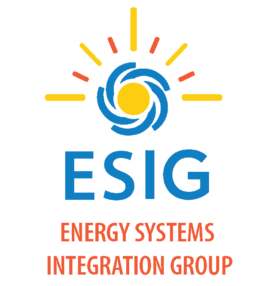Many of us have been having a lot of fun thinking about what it will really take to move to a 100% renewable power system. “100% renewable” means one thing when considering reliably running the grid, and something rather different when contemplating altering one’s carbon footprint and other societal outcomes. In discussion of the latter: 100% means energy; it means that for every minute, every hour of every year, all the electricity consumed is originally generated by a renewable resource.
For the grid operator, the first question surrounds not “every” but rather “ever”? Can the grid ever, for a single minute or a single hour, be run with 100% renewables. In the vernacular, “can we handle 100% instantaneous penetration”?
The IEEE Power & Energy magazine provides some good fodder for this discussion, with articles that remind us that “100% renewable” isn’t exactly 100% inverter-based wind & solar. The distinction between 100% renewable and 100% inverter-based renewable energy is currently quite important for the “ever” question. Wind and photovoltaic solar need inverters to create 60 (or 50) Hz electricity. Most inverters in use and offered on new wind and PV today cannot run in isolation. For practical purposes, there is no such thing today as operation at 100% wind or PV. Even for a minute.
The industry – inverter designers, protection and control experts, turbine-generator suppliers, etc. – knows how to make 100% inverter systems work, and has done so in some small power systems (e.g. Metlakatla, Alaska, to name one). But today, the limit on instantaneous penetration for larger systems is approaching 80% (per EirGrid and other recent work).
The gap between the design for small isolated instances and large-scale robust, economic offerings for the industry at large is closing rapidly. The worry about 100% inverters will rapidly evolve into another facet of good utility practice. It may be an initially bumpy ride, but we will be looking at the “ever” challenge in the rearview mirror in just a few years.
Once we surmount the “ever” obstacle, we can embark on conquering the “every” part of 100% renewable energy. For now, the idea of completely abandoning fossil generation raises the hair on the back of many necks, including many that consider themselves green. Giving voice to that 100% “every” (i.e. 100% energy) future vision today causes many a stakeholder to blanch. Issues of grid reliability and the economics of energy loom large. It is not an impertinence to ask, “What happens during a week-long winter high-pressure system of bitter cold and dead calm?” There are many variations on the theme.
Many of us in the variable renewable generation integration community know that we can get to 100% energy, but it will take some evolution of technology and systems. But like so many real-life challenges, engineering and otherwise, the 80/20 rule applies here. We already know how to get to 80%, economically and using existing, commercially available technology. The last 20% is doable, and worth pursuing, but it will be a steeper climb to get there.
In North America, we are far from 80%. With such a long way to go before we must wrestle that last 20% to the ground, moderating the language of a high-renewables vision may make it easier to build a broader, positive consensus on renewable policy and help defang the more extreme voices of opposition. Let’s take 80% energy and run with it… knowing that the next summit beyond could be 100%.
Nick Miller, Senior Technical Director
Energy Consulting
GE Power

Relying on 100% renewable energy is not synonymous with relying 100% on inverter-derived solar and wind energy. Once we get to 80% or so, the remaining can be filled in by conventional (largely existing) thermal power plants operating on carbon-neutral fuels produced from renewable sources (e.g., hydrogen, bio-methane, ammonia, etc.). So-called “power-to-fuels” pathways hold the key to achieving 100% renewable energy. Although other solutions may be developed, these technologies exist today at reasonable cost. Not only can existing conventional thermal units convert the fuels back to electricity, but existing infrastructure (especially the natural gas system) can provide both transportation and storage. Power-to-fuels as a solution appears to be a significant part of Europe’s effort to decarbonize. For more, see section 2.6 of “Towards 100% Renewable Energy Systems (Elsevier, 2016)”: http://www.flinkenergy.com/resources/Towards%20100pct%20renewable%20energy%20systems.pdf
Ken, I fully agree. I think realistically, the 100% inverter aspect is only relevant for the “ever” question. i.e. can the system ever go to 100% inverters, even for limited periods of time? There are growing instances today for which we would like to be able to operate there for a while (minutes, hours, possibly days in the near future). We’ll need to bridge that gap. That isn’t at odds with your observations about other fuels and energy systems integration.